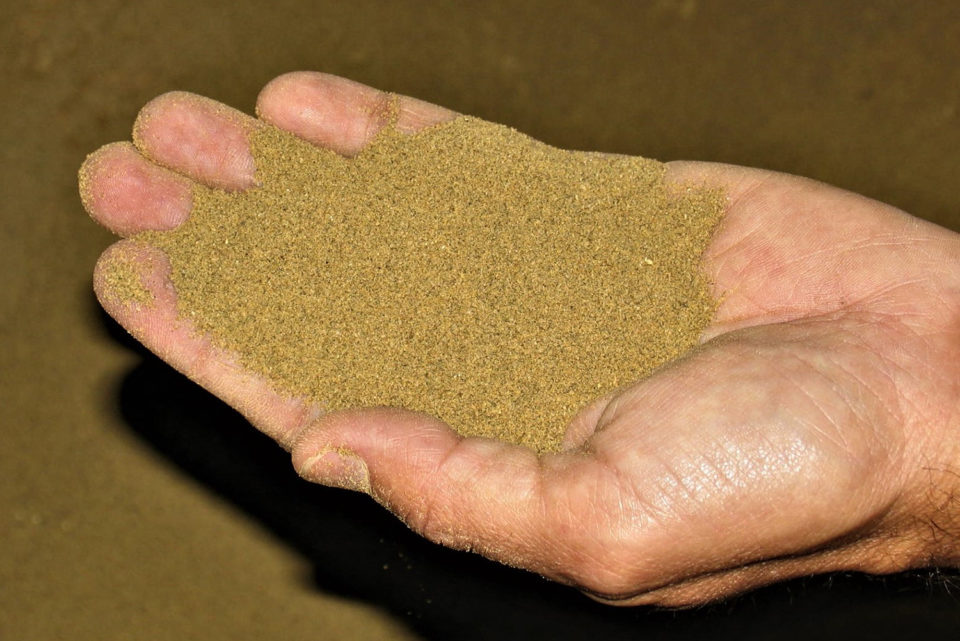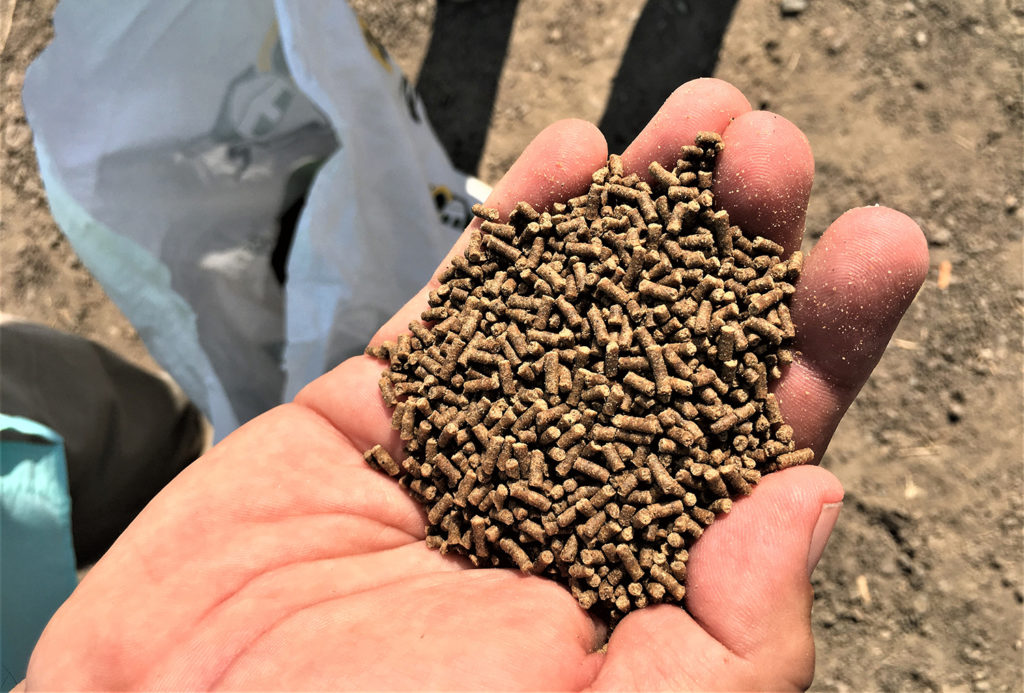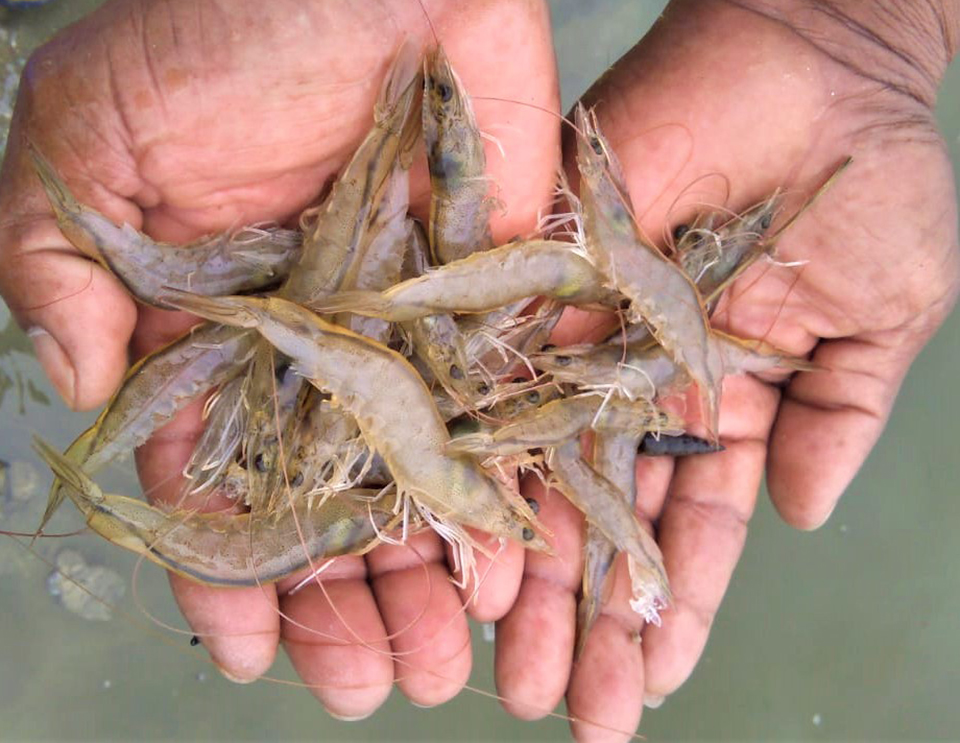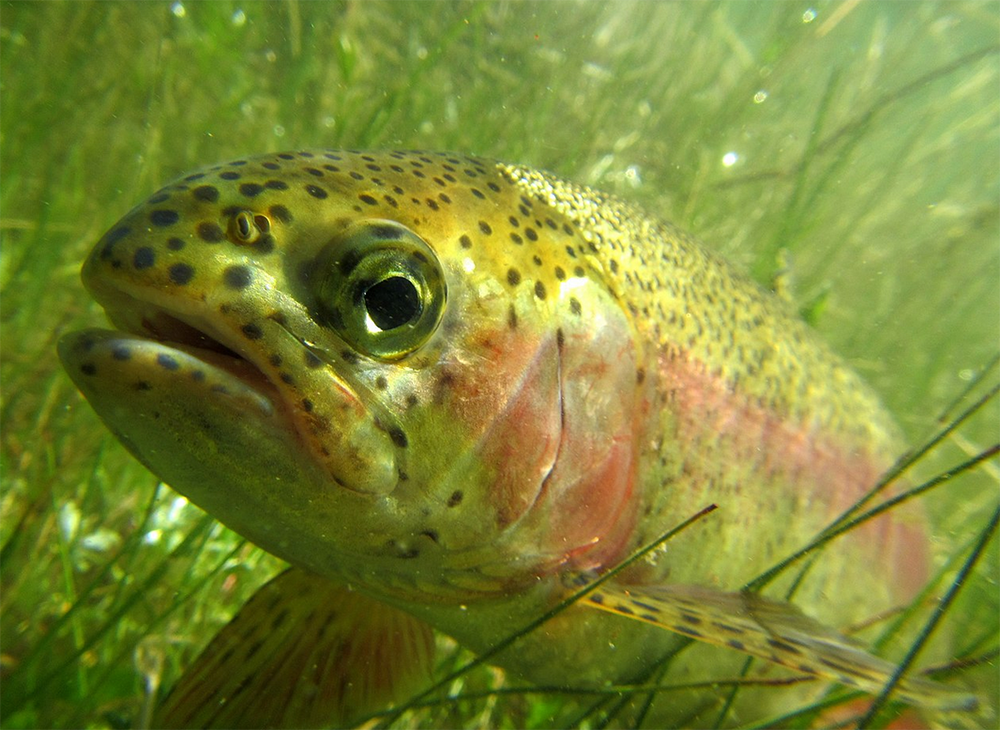The choice of strategies used to assess aquafeed ingredients can have a strong impact on the interpretation of their quality

This article is the second and final part ̶ adapted and summarized from the original publication (Glencross, B.D. 2020. A feed is still only as good as its ingredients: An update on the nutritional research strategies for the optimal evaluation of ingredients for aquaculture feeds. Aquaculture Nutrition, Vol. 26, Issue 6, December 2020, Pages 1871-1883.) ̶ of a review that provides an oversight and some guidance on what steps should be undertaken to assess quality of ingredients and why those steps should be taken in that order and critically, what new steps should be considered for the assessment process in light of recent advances in the science.
Step 5: Immunological and health allied assessments (continued)
The recent advent of relatively low cost and reliable DNA sequencing has made it much easier to analyze the microbial diversity of samples. This is now generally referred to as an assessment of the microbiome [characteristic microbial community that occupies a reasonably well-defined habitat with distinct physio-chemical properties]. In this analysis, changes in the microbial diversity and abundance in samples (usually feces) are assessed by sequencing certain genes using universal primers and targeting specific regions that allows the identity and abundance of the bacteria present in any sample to be identified in response to diet/ingredient use.
There has been considerable activity in this space in recent years, with many studies demonstrating responses of the microbiome to changes in the use of ingredients. However, what appears to be lacking is the cause-effect evidence that such changes in the microbiome are relevant to the changes in performance of the diets and/or animals and not just another concomitant change without impact.
Step 6: Processing effects (functionality)
Physical constraints play an important role in the production of a viable feed for aquatic species. The fundamental logistics of handling ingredients have an often-overlooked role in the ingredient assessment process. Most modern aquaculture feeds are manufactured using extrusion processing, where the rheology [the study of the flow of matter] of a given feed mix is managed to allow the plasticization or softening of the components to produce a well bound and durable product that can be tailored to float or sink and contain a high or low oil content.
Some of those physical characteristics that are assessed are relatively simplistic but remain fundamental to managing the logistics of using ingredients. Parameters include those such as the flow-figure, which defines the ability of a powder/meal to flow and/or be conveyed. The bulk density, which defines storage demands and hygroscopicity [tendency of a solid substance to absorb moisture from the surrounding atmosphere] which characterizes how much moisture the product absorbs from liquid or vapor exposure, is all critical to effective management of ingredients.
Ingredient assessment in this area typically involve the practical production of feeds using laboratory or pilot-scale extrusion systems. Variables such as the type of ingredients used and/or their inclusion levels are the main variables tested in these studies, and a range of parameters are subsequently assessed to provide information on the physico-chemical properties of the ingredients on the extrusion process (e.g. specific mechanical energy input and expansion, among others). The feed pellets produced from such studies usually then go on to other testing (e.g. density and oil absorption capacity) to assess a range of physical parameters important to the feed and feeding management process.
There are other assessments which can now be used to provide alternative measurements of the extrusion process. An important feature of these physico-chemical properties of ingredients is that they clearly play a role in impacting the physical qualities of feeds. Markedly, these physical feed qualities can also directly impact feed intake and nutrient utilization, and that this also should be considered when designing nutritional tests.
Step 7: Product quality influences
The animal species being fed are typically intended as a food product. Therefore, the sensory qualities (color, taste and smell) are important criteria in determining quality of those products. Accordingly, the use of sensory evaluation studies is sometimes included to evaluate the impact of different dietary treatments, including the use of ingredients. There are various elements to this evaluation, but principal among them is the evaluation of flavor and/or color.
Flavor as a parameter has a large degree of complexity to it given that there are components defined by the tongue senses (taste: salt, sweet, acid, bitter and umami or savoriness), and there are those components defined by the olfactory senses (smell). The evaluation of these sensory characteristics is typically undertaken using a range of strategies including the use of tasting panels, but increasingly the use of instrumentation is being used to assess color, odor and texture.
Sensory data are commonly considered qualitative in nature rather than quantitative. The advantage of using an instrumentation approach is that the data can be quantitative rather than qualitative. For some aspects of sensory evaluation, modern instrumentation analyses are even considered to be more sensitive than human senses and therefore provide a greater level of assay fidelity. Although in some instances, like with the detection of the muddy taint of geosmin [a chemical compound that causes the characteristic “earthy” odor in some aquaculture animals grown under certain water conditions], the advantages of instrumentation over human sensory perception have been questioned.
There have been several studies dedicated to examining the influence of different ingredients on the flavor profile of a range of different aquaculture species. Although a variety of effects of alternative ingredients on sensory characteristics of animal products have been reported ̶ including changes to meat texture, fatty acid profile, prevalence of melanin spots and pigmentation ̶ the effects frequently are relatively limited and mostly confined to changes related to the use of different lipid sources.
Color as a quality parameter, like flavor, also has many complexities to it subject to the objectives being sought, which are largely defined by the species being farmed. There are various methods that have been developed to assess color, including the use of color-fans, color-meters and computer-assisted imaging assessment techniques. Most studies examining elements of color end to focus on the application of carotenoids or carotenoid containing meals.
Other nutritional assessments
There is a range of other nutritional assessment methodologies and strategies that either value-add the primary in vivo work previously detailed and/or add new dimensions to that work by providing a greater systematic assessment of the functionality of the various nutritional responses seen. While many of these appear relatively academic in their intent, some have clear practical application in the ingredient assessment process.
Rapid analysis technologies
The processes of in vivo [the process of testing biological interventions on whole, living organisms] assessment of diet and ingredient quality assessment are costly, laborious and time consuming. The development of technologies for the rapid analysis of nutritional value of raw materials, such as the use of in vitro assays and scanning technologies, like near-infrared spectroscopy, NIR [a spectroscopic method that uses the near-infrared region of the electromagnetic spectrum, from 780 nm to 2500 nm, for diverse research applications] has been the subject of research since the 1980s. This next section will examine some of the various assessment methods that have been attempted.
In vitro assessments
There are several options for the use of in vitro [studies caried out with microorganisms, cells, or biological molecules outside their normal biological context] assessments of ingredient quality that can be applied. These extend from simple chemical analysis of specific parameters of the ingredient to provide a guide on various quality indices, to more complex in vitro assessments that aim to mimic the digestion process and provide an assessment of digestibility.
Perhaps the most commonly used in vitro assessment used as a quality criterion is those based on the level of certain indicators of quality/freshness in some ingredients, such as the TVN assay for fish meals. Such indices have been used for other ingredients, like poultry and blood meals, though are less common, and new more rapid methods are being introduced. For fish meals though, such assays have become so routine these days that they are used to provide demarcations between premium, high and average quality fish meals, and various methods can be used to assess these parameters.
Various in vitro digestibility [measure of the degree of net absorption of nutrients in the digestive tract] methods have been used to try to provide estimates of the nutritional (digestible) value of different raw materials. Most methods use an enzyme-mediated process, but the key variable is often what enzymes are used (purified preparations or crude homogenates) and how the various products of the enzymatic process are interpreted that vary across the different methods. However, critical to the viable use of any rapid assessment method must be their validation against in vivo methods of assessment.
Without these validations, the in vitro responses are merely academic. Although there has been much work done on developing and testing a range of in vitro assays, a range of problems surrounding their use persist. While they are clearly quicker than using in vivo testing, they are still time-consuming and have continued to have problems surrounding their reliability and inconsistencies in their predictive ability, though recent studies claim to have made significant gains in this area.
Near‐infrared and nuclear magnetic resonance spectroscopy
In contrast to in vitro assays, technologies like near-infrared (NIR) spectroscopy and nuclear magnetic resonance (NMR) spectroscopy [a technique to observe local magnetic fields around atomic nuclei] have allowed the assessment of the nutritional value of raw materials, on a near-real-time basis and provide significant advancements in the responsiveness and cost savings in diet formulation by the feed industry.
The use of NIR for determining the composition of raw materials is now relatively common in most modern feed production plants throughout the world. However, the use of NIR to assess the digestible value of protein and energy from raw materials is not as well established and reports on its successful application are scarce. To achieve a viable NIR calibration, it is critical that a wide range of samples is obtained from which to determine the nutritional (digestible protein and energy) values of the raw materials and to then correlate this with the NIR spectra of those same samples.
The process of calibration development can be laborious and costly, though the potential gains in functionality through this method are enormous. Not only can NIR be used to determine compositional and nutritional (digestible) parameters of feeds and ingredients, but it has also shown some prospect in being used as a discriminatory tool to determine the origins of raw materials to make certain ingredients (e.g. the type of fish used to make fishmeal.
Regarding nutrigenomic and allied assessments, a variety of “omics”– transcriptomics, proteomics, metabolomics [the collective characterization and quantification of pools of biological molecules that translate into the structure, function and dynamics of an organism or organisms] – applications have emerged in aquaculture research with varying degrees of success in their application and capacity to deliver meaningful outcomes to nutritional science.
Transcriptomic analysis
Transcriptomic analysis is an assessment of the gene expression changes that occur in response to some stimulus. In nutrition, this is usually with the use of a nutritional regime involving diets with different nutrients and/or ingredients and the assessment of the expression of specific genes relevant to various metabolic pathways. It has become quite routine practice to include some level of transcriptomic analysis in modern nutritional research. However, it can be argued that in many cases, the practical value of using transcriptomics is questionable at best. Responses of the transcriptome (all those genes being expressed at any given time) to diet change dramatically postprandially, with tissue samples collected 24 hours after the animal has been fed arguably having little relevance to the total level of transcriptomic activity for any particular gene.
Possibly a more pertinent approach would be to identify the postprandial [that occurs after a meal] period more responsive to diet and compare treatments from samples collected at that point. However, this requires an assessment of the variability postprandially and then often substantial changes to sampling regimes to allow the comparative sampling of experiments in time frames such as two hours after feeding.
Proteomic analysis
Proteomic analysis is an assessment of the change protein expression that occurs with the use of a particular nutritional regime. This “omics” analysis is arguably the next progression from transcriptomics in that it assesses the translation of the ribonucleic, RNA [nucleic acid molecule essential in various biological roles in coding, decoding, regulation and expression of genes] produced from the differential gene expression in transcriptomics and allows variables of translational and post-translational effects to be examined and therefore allows a closer look at the functional impact of a gene expression cascade. Additionally, a range of tools can be applied at this level to examine post-translational modifications to identify whether their functional activity is also being affected.
Metabolomic analysis
Metabolomic analysis is an assessment of the changes that occur in the abundance of metabolites within either a whole animal, tissues or cells. In this regard, metabolomics aims to use metabolite profiles to identify biomarkers [a biological marker is a measurable indicator of some biological condition or state] indicative of physiological responses of organisms to nutritional or other conditions.
One of the benefits of the metabolomics approach is that it uses a broad scan of biological conditions to identify often unexpected problem or risk areas upon which to focus attention. However, to date there has been little application of metabolomics in aquaculture nutrition and even less in studies devoted to ingredient assessment.
Perspectives
Since the landmark review in 2007 by Glencross et al., not only has there been considerable progress in the science of ingredient evaluation for aquaculture feeds, but expectations from the users of those ingredients have also evolved.
The original five steps proposed by the original authors still remain highly relevant, though emphasis on other parameters has now come to the fore as we increasingly adopt new ingredients into feeds for aquaculture species. Despite this, it still remains critically important that scientists evaluating ingredients do not skip the foundational steps in the rush to give quick answers.
References available in original publication.
Now that you've reached the end of the article ...
… please consider supporting GSA’s mission to advance responsible seafood practices through education, advocacy and third-party assurances. The Advocate aims to document the evolution of responsible seafood practices and share the expansive knowledge of our vast network of contributors.
By becoming a Global Seafood Alliance member, you’re ensuring that all of the pre-competitive work we do through member benefits, resources and events can continue. Individual membership costs just $50 a year.
Not a GSA member? Join us.
Author
-
Brett D. Glencross, Ph.D.
Institute of Aquaculture
University of Stirling
Stirling, UK[107,117,46,99,97,46,114,105,116,115,64,115,115,111,114,99,110,101,108,103,46,100,46,98]
Tagged With
Related Posts

Aquafeeds
Updating nutritional research strategies for the optimal evaluation of aquafeed ingredients, part 1
Many strategies can be used to assess the nutritional quality of ingredients. The choice, however, can impact the interpretation of that information.

Health & Welfare
Transcriptomic analysis of Pacific white shrimp in response to AHPND
Study investigates the response of the L. vannamei hepatopancreas during AHPND infection to find new genomic approaches for this aquaculture problem.

Aquafeeds
Long-term dietary replacement of fishmeal, fish oil in rainbow trout
This study evaluated the effects of replacing fishmeal and fish oil with a plant-based diet in juvenile and on-growing rainbow trout from first-feeding.

Health & Welfare
Trans-omics evaluation of cultured and wild female Japanese eels
Trans-omics analysis was used to evaluate the differences between cultured and wild female Japanese eels, and possible causes of the ovulation problems frequently seen in cultured females.


